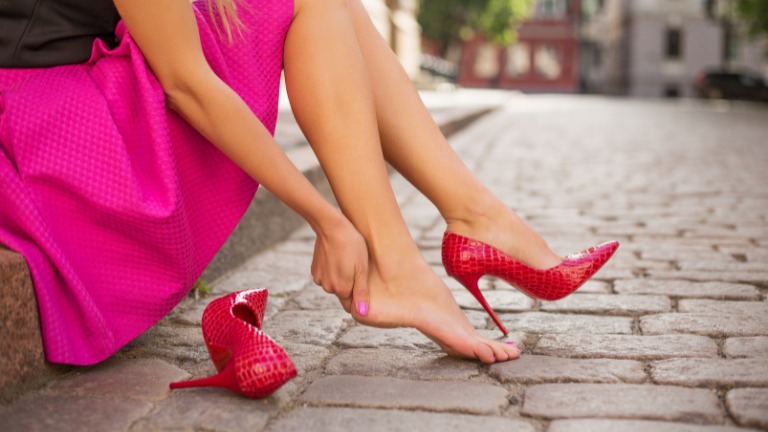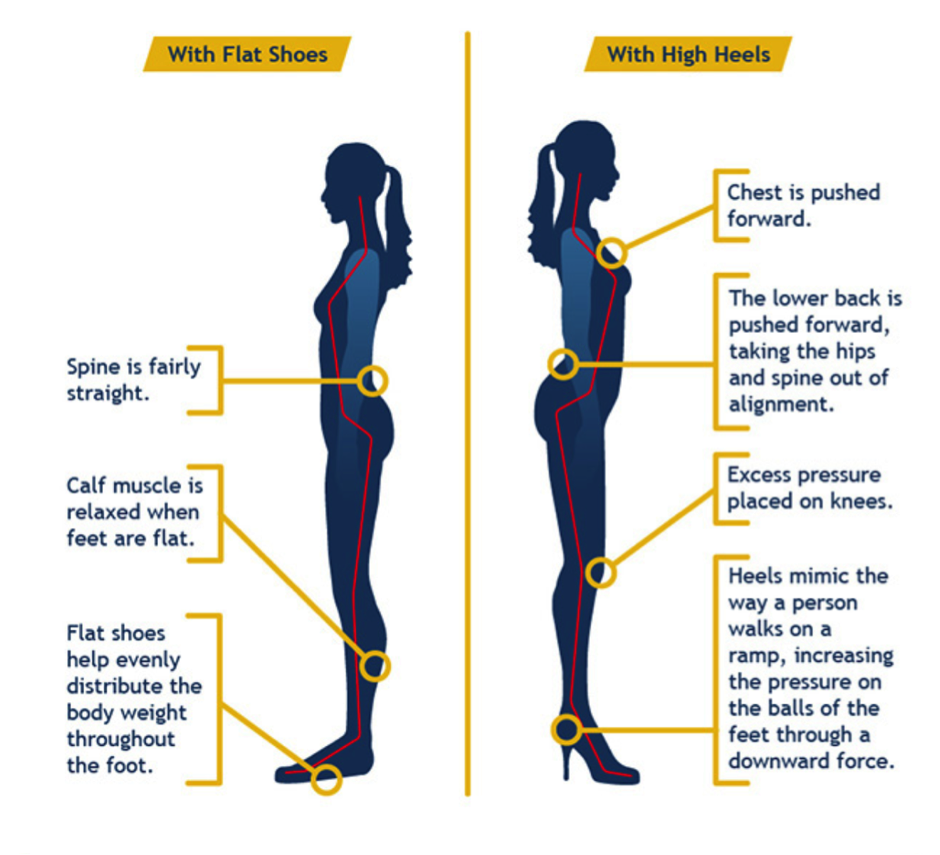
High Heels – High Risk!
The party season often means dusting off the perfect pair of heels to complete your outfit for a special event. While some (unfortunate) women wear heels every day for work, many of us live in flat shoes for the majority of the year. There is a mountain of research that shows wearing heels on a regular basis can lead to all sorts of back, knee, ankle and feet problems, and when you look at how your body position changes wearing heels, it’s not hard to see why.
For the causal heel wearers among us, while popping a pair on from time to time may not cause long-term problems, you can find yourself in a world of pain after a night out on the town. We’ll take a look below at the side effects of wearing heels, and how to lessen or prevent these painful effects.

1. Foot Pain
Of all the negative effects of high heels, foot pain is usually the one you feel first. When you walk in heels, your weight is shifted forward, rather than being evenly distributed across your entire foot. Why is this important?
Your heel is made of a single bone; it absorbs your weight and distributes it to the tarsal bones in your ankle. Your toes, on the other hand, are a collection of 21 smaller bones designed for flexibility rather than strength.
But it isn’t just sore feet you need to worry about. When the ball of your foot is responsible for carrying your weight, you are more likely to develop blisters, corns, calluses, ingrown or damaged toenails, hammer toes, and even stress fractures.
2. Leg & Back Pain
Your feet aren’t just a way for you to get around, they’re the foundation for your entire body. And as any architect can tell you, when the foundation is compromised, the whole house is in jeopardy.
When you wear high heels, your lower body leans forward to balance on your toes, which means your upper body must lean backward to compensate. This posture places an excessive amount of stress on your knees, hip flexors, and lower back. Over time, joints can be pulled out of alignment.
If you wear high heels every day, your muscles and tendons can actually shorten and contract, making it difficult to walk—even in flats!
3. Balance Issues
Do you remember how awkward you felt in your first pair of heels (or how wobbly it felt the last time you put on a pair that you seldom wear)? It can be hard to balance when walking on your tiptoes. It’s especially difficult in stilettos when the shoe’s heel is narrower than your foot.
When you wear high heels, your body’s centre of gravity changes. Some of you may even have felt the need to practice walking in a new pair of shoes to become accustomed to the shift in your centre of gravity.
Over time, you may be able to do this without any mental strain, but your muscles, tendons, and joints are still under the physical strain of walking in such an unnatural way. Furthermore, being off-balance makes you more likely to trip, roll or sprain an ankle, or fall.
4. Arthritis
The unnatural gait and posture caused by walking in high heels can also cause pain later in life.
High heels put a lot of extra force on your knee and other joints. When these joints are forced to work harder, they wear down faster, causing osteoarthritis.
What’s a shoe lover to do?
Let’s face it, there are some instances where you just can’t get away with wearing flats. So, here are a few things to think about before you go shopping for heels, or in the lead-up to the big night:
When choosing new shoes:
- Go for a shorter heel – Heels two inches or less put less pressure on joints.
- Opt for a more chunky heel or wedge to provide more support
- Place cushions in your shoes and heels – Make your shoe choices more comfortable for your feet.
- Avoid shoes that pinch and rub, or are too tight around the toe area
- Wear NEW high heels around the house for to wear them in: This gives the feet a chance to get used to them before you try something more strenuous like dancing.
Stretches for your body:
Regular stretching of the plantar fascia and calves will loosen hamstrings and work to alleviate back pain from your high heels. Try stretching before and after long periods in heels and sneaking in some footwork during breaks in your day.
- Grab a water bottle on its side, a spiky ball or a tennis ball and roll it under your feet to help relieve the muscles and tendons.
- Sit in a chair and use a yoga band or towel slung around your foot. Pull the band towards you as you stretch your toes towards your head.
- Stand on a step and move up to your tippy toes then lower down past the step (calf raises and lowers).
- Treat your feet to a soak in some warm water with Epsom / Magnesium salts

No Comments